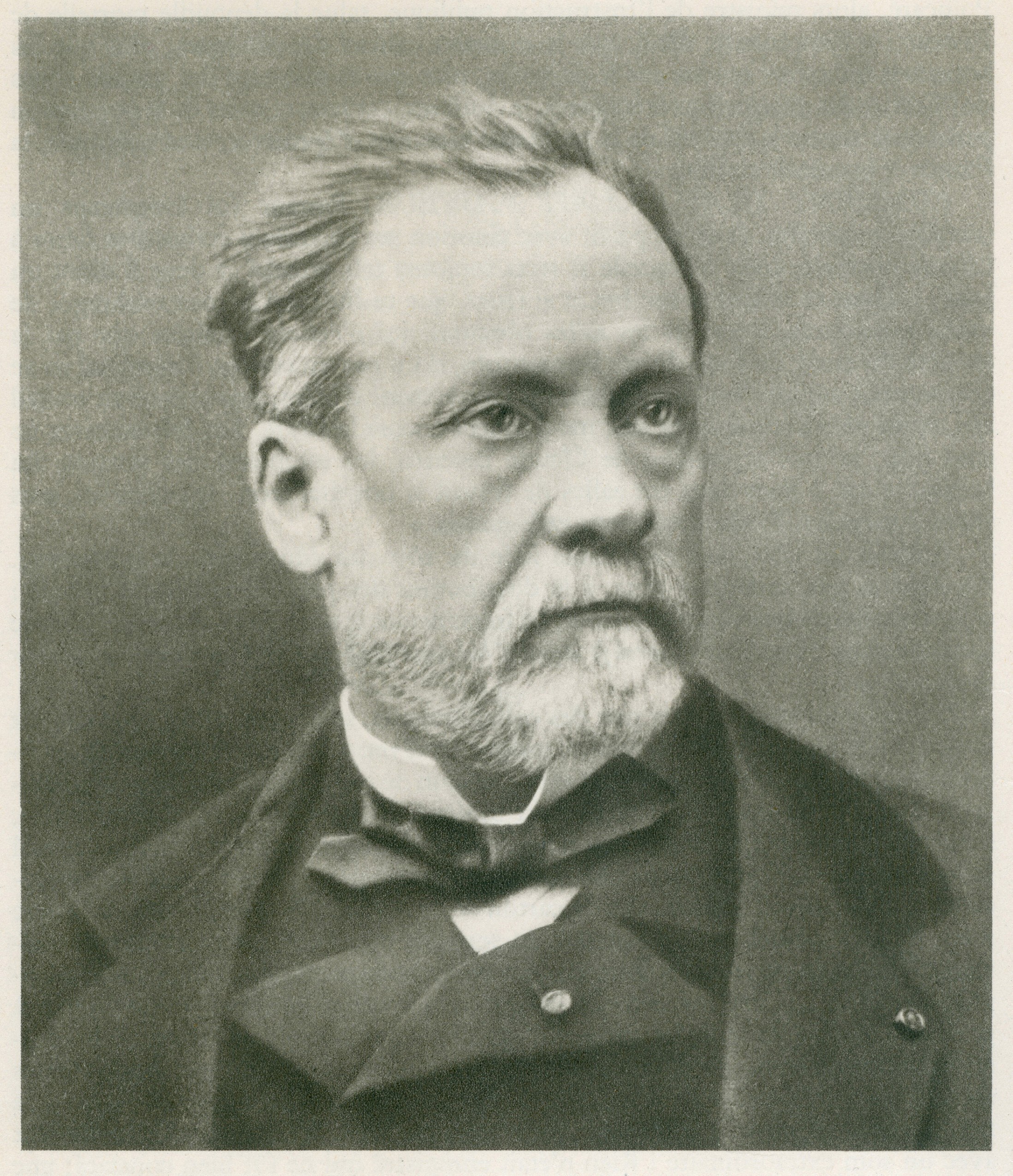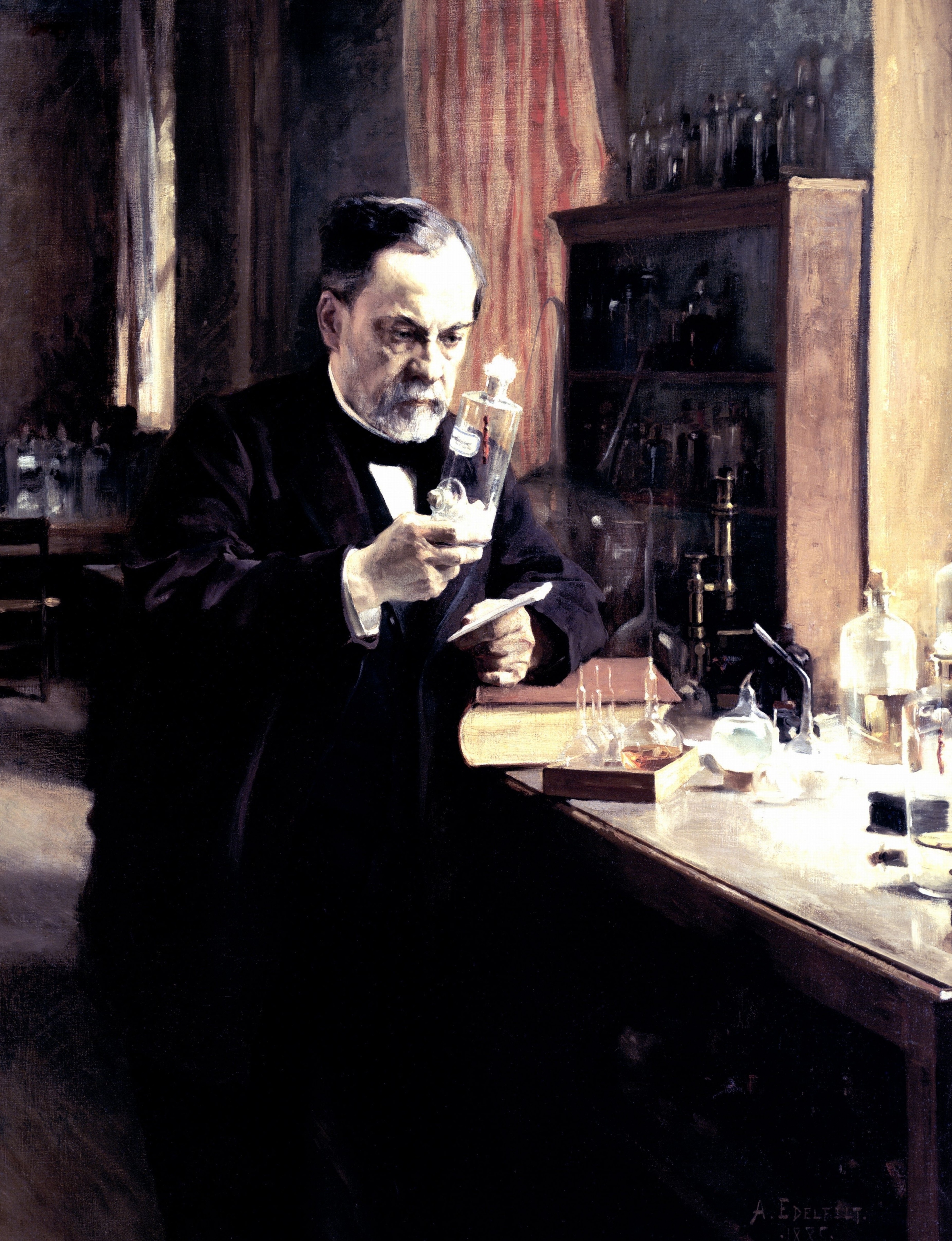Pasteur, << pas TUR, >> Louis (1822-1895), of France, made major contributions to chemistry, medicine, and industry that have greatly benefited humanity. His discovery that diseases are spread by bacteria saved countless lives. Pasteur was a great theoretical scientist who applied his basic discoveries to important practical problems in both industry and medicine.

His work in chemistry
brought him his first recognition. By the age of 26, Pasteur was famous for his work on the structure of crystals. But Pasteur soon started probing the mysteries of bacteriology (the study of bacteria). Others saw bacteria before Pasteur did. But he was the first to show that living things come only from living things. Before that, many scientists believed in spontaneous generation, a theory that life could come from things that are not alive, such as dirt. Pasteur also showed that although bacteria live almost everywhere, their spread can be controlled. See Bacteria ; Spontaneous generation.
His work in industry.
Pasteur is credited with saving the silk industry and wine industry in France. In the early 1860’s, he noted that wine turns bitter because of microbes (germs) that enter the wine while it is being made. He showed that microbes can be killed by applying controlled heat. This use of heat as a means to kill germs became known as pasteurization. Pasteur also used this method to preserve milk and beer, and to preserve food. See Pasteurization.
In 1865, Pasteur set out to help the silk industry. A disease called pebrine was killing great numbers of silkworms. He worked several years to prove that a microbe that attacks silkworm eggs causes the disease. He showed that eliminating this germ in silkworm nurseries would wipe out the disease.
His work in medicine.
Pasteur proved that many diseases are caused by germs that multiply in the body. He also proved that if microbes are weakened in a laboratory and then placed in an animal’s body, the animal develops an immunity (resistance) to the microbe. He called this method of fighting off microbes vaccination. Pasteur proved the value of vaccination by vaccinating sheep against a disease called anthrax (see Anthrax ). He also showed that vaccination could be used to prevent chicken cholera and other animal diseases.

Pasteur began in 1881 to study rabies, a deadly disease spread by the bite of rabies-infected animals. He spent endless hours in his laboratory seeking a vaccine to prevent rabies. One day in 1885, a rabid dog bit a boy named Joseph Meister. The boy’s parents begged Pasteur to save their son. Pasteur hesitated to use his new vaccine on a human being, but he finally agreed. After several weeks of treatment, the vaccine proved successful. The boy did not get rabies. See Rabies.
His life.
Pasteur was born on Dec. 27, 1822, in Dole, France. His family moved to Arbois, where he received his early education. Pasteur was a slow but careful student who showed a talent for art. He later studied chemistry at the Ecole Normale Superieure in Paris.
In 1849, Pasteur became a chemistry professor in Strasbourg, France, where he began studying fermentation, a type of chemical breakdown of substances by microbes (see Fermentation ). His work brought such improvements in brewing and winemaking that some say France was able to save enough money to pay its Franco-Prussian War debt.
Pasteur became director of scientific studies at the Ecole Normale in 1857, but he left this post in 1867 to focus on his research. In 1868, a brain stroke partially paralyzed Pasteur. Despite his poor health, he continued his work. The Pasteur Institute in Paris, a world center for the study, prevention, and treatment of disease, was founded in 1888 in gratitude to him. He served as director of the institute until his death on Sept. 28, 1895. Pasteur is buried in a tomb in the building.
